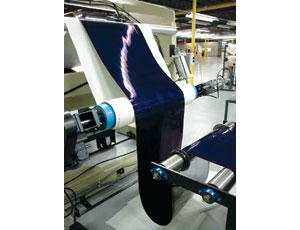There are signs of recovery this spring as designers in sectors for manufacturing and telecommunications see renewed, although cautious, activity in markets.

“There is more tire-kicking going on, more proposals are going out, and there is generally more activity in the markets this year,” says Mike Yungerman, vice president of real estate development at Chicago-based Opus North Corp. “There are the first signs of a recovery and a lot of optimism right now, but we don’t expect that to hit our bottom line for another six months to a year.”
Designers are optimistic that warming activity in manufacturing markets could signal a turnaround. And while the downturn is certainly still a reality for everyone in these markets, owners who took a two-year hibernation from investments during the recession freeze are perking up as demand for consumer goods ramps up. Still in “survival mode,” manufacturers “are taking a lot more time to consider things, [and] there is much more aggressive pricing,” Yungerman says.
Owners’ time-to-market concerns have designers working in ever-shortening windows of delivery, Yungerman adds, with integrated deliveries such as design-build and EPC as first choices.
Despite the recession, some markets, surprisingly, are experiencing boom-like activity, designers report. “[Markets] have certainly slowed but not stopped, and in some markets we are busier than ever,” says Don Belliveau, senior vice president at Edmonton, Alberta-based Stantec Inc. “Many projects that were placed on the back burner now are coming back to the forefront and being developed.”
Renewed Cash Flow
Belliveau points to a $44-million project for mining company BHP Billiton, Melbourne, Australia, for design and services at shaft and hoisting plants in Saskatchewan, for example. “Commodity metals such as copper suffered a large decline in price, which halted projects, but much of the decline has been recovered, and renewed cash flow is providing capital for projects—we are hiring staff,” he says.
Food manufacturers’ appetite for construction has weathered the downturn too. “Some of our clients were hit hard, but others have fared well due to the product they manufacture,” says Dave Sipes, senior vice president at Toledo, Ohio-based SSOE Inc. “Some food manufacturers have increased sales because today people are buying more groceries and not eating out at restaurants as often.” Still, “the market is very competitive,” says Sipes, an indication that designers are not yet out of the woods.
“We are seeing a trend toward EPCM, but design-build is still most prevalent,” says Sipes. SSOE has won several contracts for its EPCM capabilities this year, including a $47-million expansion for American Snuff Co. in Clarksville, Tenn., which involves 350,000 sq ft of new construction and as much in renovations and as well as a $1-billion, 2.7-million-sq-ft auto production plant in Chattanooga, Tenn., both currently in progress.
In telecommunications, designers report a heavy drive for more energy-efficient facilities. It’s constantly increasing— “And it’s here to stay,” says Charles Fritts, vice president at Orlando-based Reynolds, Smith and Hills Inc. Like manufacturers, the demands of telecom owners have morphed with the economy, designers say, with a rising trend for integrated delivery, co-located data centers and managed hosting facilities.
Furthermore, despite the downturn, there is latent demand just under the surface of telecom markets as new technologies quickly emerge, says Fritts. “There also is an expansion in health-care data centers as hospitals move to make records electronic,” he says.
Reynolds, Smith and Hills has data center design projects ranging from $6 million to $27 million currently in the works for undisclosed clients in Florida, California, the Dominican Republic and Colombia, says John Carew, senior project manager. Still, promising signs of recovery have not eclipsed the realities of the market. “There has been a lot of suffering, and many firms haven’t made it,” Carew adds.


Post a comment to this article
Report Abusive Comment